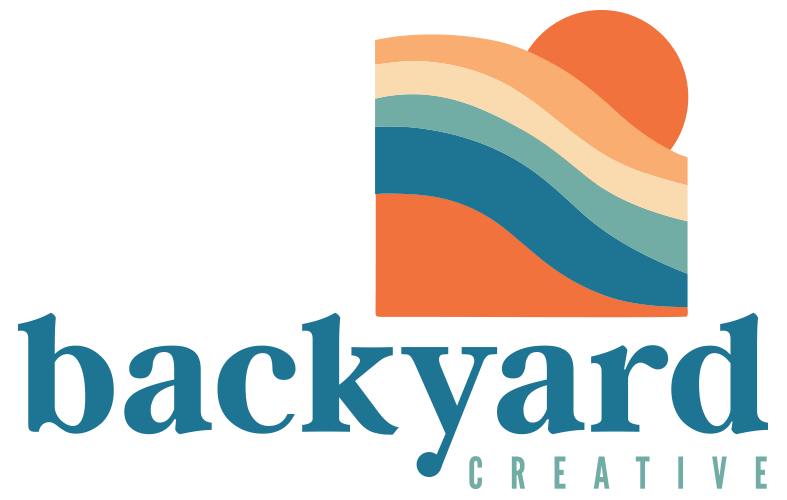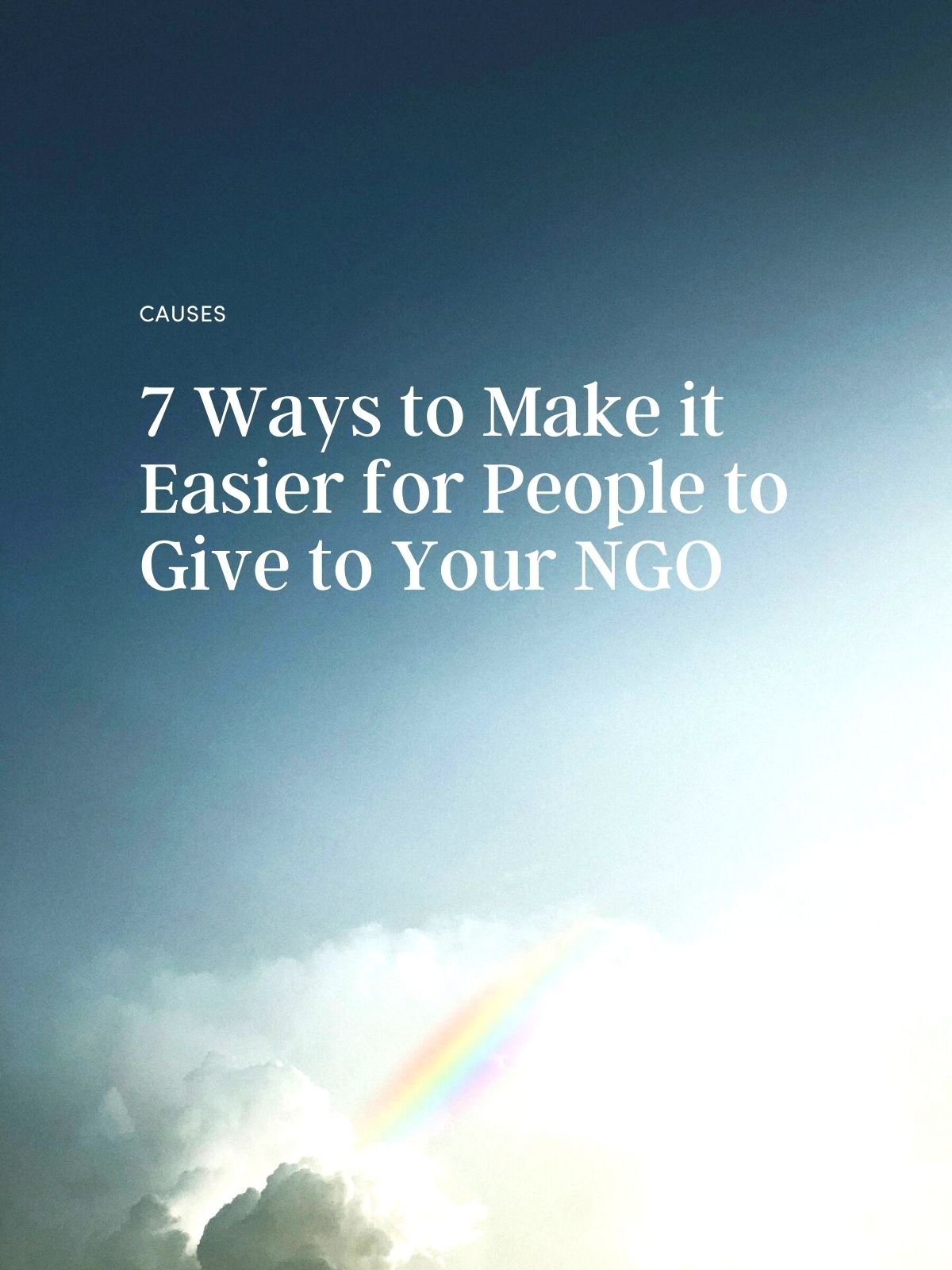7 Ways to Make it Easier for People to Give to Your NGO
We have just experienced some devastating weather here on the East Coast of South Africa. The flooding and resulting mudslides, swollen rivers, collapsed bridges and roads, loss of property and most tragic of all the loss of lives means it is officially categorised as a natural disaster. My heart goes out to those who have lost so much. It has been a lot.
In times of disaster it is hard to know where to start helping, and one of the most accessible ways to do so is to give financially to trusted NGOs, charities and organisations. They are equipped and connected to start providing practical aid as soon as possible within the affected communities. We have so many wonderful NGOs here in South Africa assisting with rescue, temporary shelter, food and water distribution and other critical services.
When I started looking around for how and where to give I noticed that many NGOs don’t have obvious ways to give listed on their websites and social platforms, so I thought it might be helpful to list a few practical ways in which your NGO can make it as easy, quick and obvious as possible for people to give so that the money gets to where it can make the most impact.
01 | Set up a website
This might seem obvious, but many established community projects or NGOs don’t yet have a website set up. There are so many other urgent tasks to get to that ‘build a website’ is constantly pushed to the end of the to-do list. A website makes the important work you do more visible to the public so that people can see the work you’re doing, trust that you’re ‘the real deal’, get in contact with you, and importantly find ways to help by volunteering their time, donating resources, or giving financially.
I know that most NGOs don’t necessarily have the resources on hand to pay a web developer or hire a design agency, which is exactly the time to get creative and to ask around. People like to help! And if its for a worthy cause, I’m pretty sure you know someone who knows someone who would be willing to set up a simple website for a reduced rate. Alternatively, you can makes sure that ’build a website’ is moved closer to the top of your to-do list. Then make this new priority visible through your newsletters and other communication along with some reasons for why its a priority. It will go a long way to helping people understand why giving towards your website build is critical for the long term sustainability and success of your NGO.
02 | Set up your social accounts
In times of crisis, the place where news travels fastest is on social media: Twitter, Facebook, and Instagram. If you have your social accounts up and running you can quickly:
share what’s happening in your area,
explain how your team is helping on the ground,
send real-time updates,
ask for very specific needs,
mobilise an army of volunteers,
receive much needed donations, financial and otherwise.
If you don’t have these accounts set up with systems in place to manage them, when it comes to a time when you desperately need to activate your support base, it is difficult and time consuming to do so.
PRACTICAL TIP | Make sure each of your social accounts has your accurate NGO name, brief description or ‘bio’, and an obvious link back to your website with more information on how to contact you, how to volunteer and the ways in which people can donate.
03 | Make your “donate” button obvious
This is the thing I had the most trouble with when attempting to give to NGOs during this recent disaster. I could see that certain organisations were very active on social media, helping where they could, roping in volunteers and doing the heart-breaking work of helping communities where the need is greatest. We all want to support causes like this.
But when I tried to find their website, it was hard work! There was no link from their Instagram account to their website for example, or their NGO name was the same as several other businesses in the area, or their website was obsolete, or they weren’t using some helpful features like links and tags within their social accounts. And in the cases where I could go immediately get to the website, it became very confusing trying to figure out an answer to the question “How do I give?” I got the feeling some NGOs didn’t want to be obvious or upfront about the fact that it is possible to send money to them, or that they need financial assistance, so they hid their ‘donate’ section in the footer of their website below a number of other links. Or the only way I could give was to call a number. Or I had to email them to get a form to fill in. Or I had to jump through any number of hoops to do something I already wanted to do. So I gave up and moved onto another website where it was simpler and easier to give.
If you run, work in, or volunteer at a charitable organisation, please make it as easy as possible for people to give. If your systems are already set up, then in a crisis you know there are ways for money to be donated immediately, and for that money to reach the people and areas where it is most needed.
PRACTICAL TIPS
Call your donate page or portal something very obvious like “Give” or “Donate”. This is not the time to be coy or creative with confusing calls to action.
Make sure your giving page or portal is located clearly on your website, usually the top right hand corner of your website is where an important call to action can be found. Use the inherent web navigation knowledge that most people have.
Repeat the button again on the bottom right hand side of your site in the footer so that it appears on every page of your website.
Don’t be afraid to make it stand out in a bold colour, with large enough font so that it can be seen.
04 | Make secure giving a priority
People want to know that when they are making an online payment that it is through a secure payment portal. In South Africa there are a number of trusted payment portals that can be used in conjunction with your website. I would recommend PayFast, PayGate and Peach Payments. International payment gateways like PayPal and Payoneer are also widely recognised although they have a higher transaction fee. Other options like SnapScan and Zapper are also excellent local payment options that allow for quick mobile payments.
PRACTICAL TIP | Another important point here is to make sure your website has a valid SSL certificate. If your website is in need of updates, or hasn’t been maintained, often a notification appears when someone visits your site announcing ‘this website is not secure’ (or something along those lines) which undermines any trust someone might have in the security of your site. If your SSL certificate isn’t activated, contact your web developer to make sure this is sorted out swiftly.
05 | Provide giving options
Think about the different ways in which people might want to give. You’ll already have an idea about this if you do any online shopping. Usually you can pay with a credit card, or make an EFT, use your “ebucks”, pay with Masterpass, or use SnapScan, Zapper or even Bitcoin. I’m not saying you have to have so many options available that it becomes an administrative nightmare for you to set it up, but I would recommend at least three options:
A secure credit card payment option — usually provided locally by PayFast, PayGate or Peach Payments
An EFT (electronic funds transfer) option — make sure your bank details are listed for direct transfers along with international SWIFT codes and how people should reference their payments
06 | Say thank you
If you can set up some sort of automated personalised thank you email, that goes a long way to helping people know their contribution has been received and is appreciated. A thank you never goes unnoticed.
07 | A newsletter sign up
While you have people there on your site, ask them if they’d like to sign up to receive your newsletters. Chances are you’ll be able to build an ongoing relationship with this person by providing them with more insights on what work you’re doing, where their donations were spent, and how they can be involved in the future of your NGO.
Let me know in the comments below if I’ve forgotten anything crucial off the list. Praying for our communities as we assess the damage, grieve our losses and start to rebuild. xx

